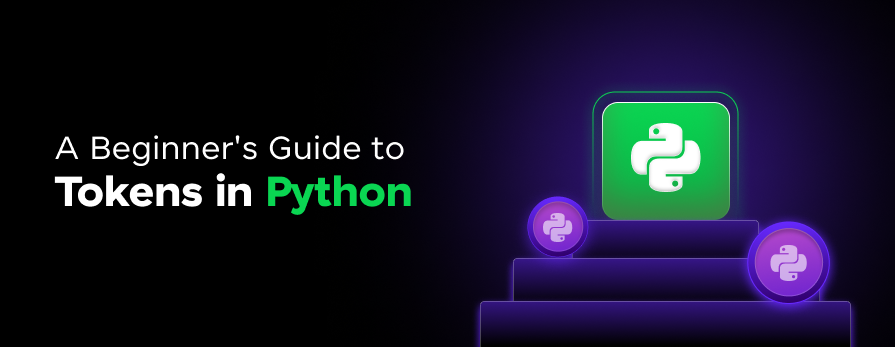
A Python developer must know about tokens in Python, from working on a simple basic code to building a great application. If you would like to know about them more, you can find them all here.
In this blog, we’ll be guiding you towards the concept of tokens in Python. We’ll be explaining to you its literal definition in Python, the types of tokens in Python code, and how developers can use it in their code efficiently. Also, you’ll be reading about why tokens matter.
Let’s read about Tokens in Python:
Table of contents
- What are Tokens in Python?
- Importance of Tokens in Python
- Identifiers
- Keywords
- Literals
- Operators
- Punctuation
- Wrap Up
- FAQs
- What is a token in programming?
- What is the Tokenize function in Python?
- What are the lists of tokens in Python?
What are Tokens in Python?
Tokens are the smallest units of a Python program and cannot be broken down further without losing their significance. They are the building blocks of the language’s syntax and are essential for the interpreter to understand and execute the code.
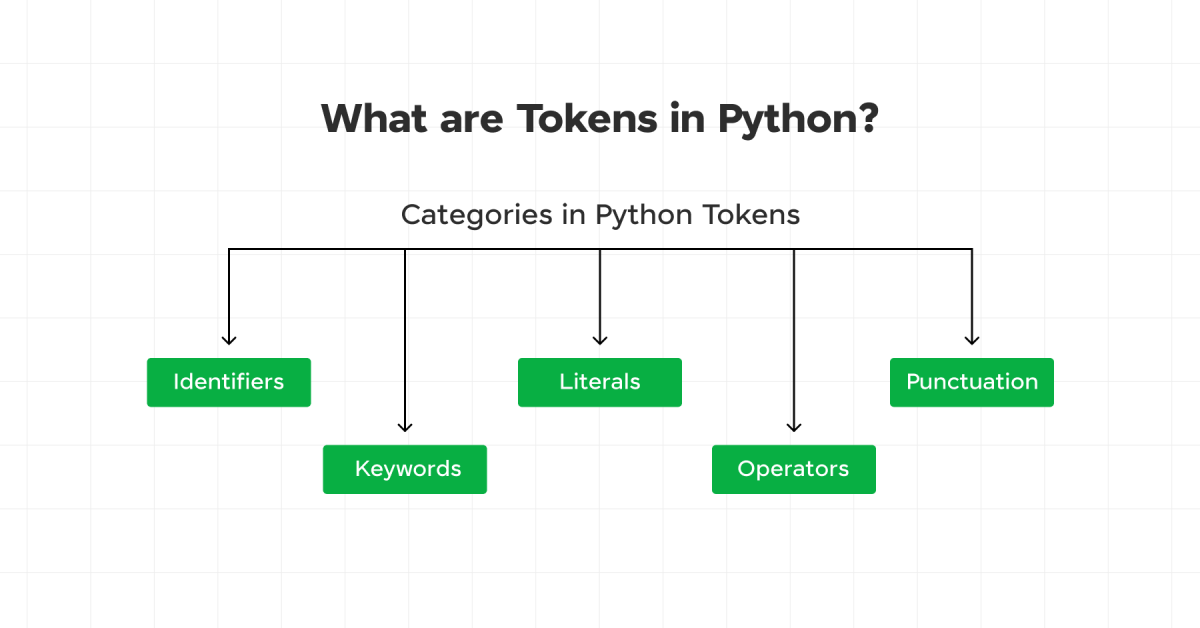
Before diving into the next section, ensure you’re solid on Python essentials from basics to advanced level. If you are looking for a detailed Python career program, you can join GUVI’s Python Course with placement assistance. You will be able to master the Multiple Exceptions, classes, OOPS concepts, dictionary, and many more, and build real-life projects.
Learn how to perform recursion operations in Python.
Importance of Tokens in Python
Below are the importance of tokens in Python:
- Syntax Understanding and Parsing
- Code Readability
- Error Detection and Debugging
- Program Structure and Flow Control
- Variable and Function Definitions
- Operations and Expressions
- Data Representation
- Code Organization
Tokens in Python are classified into several categories:
- Identifiers
- Keywords
- Literals
- Operators
- Punctuation
You must also know some of the interesting reasons why you should learn Python.
Let’s read about the categories of Python tokens in-depth here:
1. Identifiers
Identifiers are names used to identify variables, functions, classes, modules, and other objects. They are essentially the names you use to refer to your data and functions in your code.
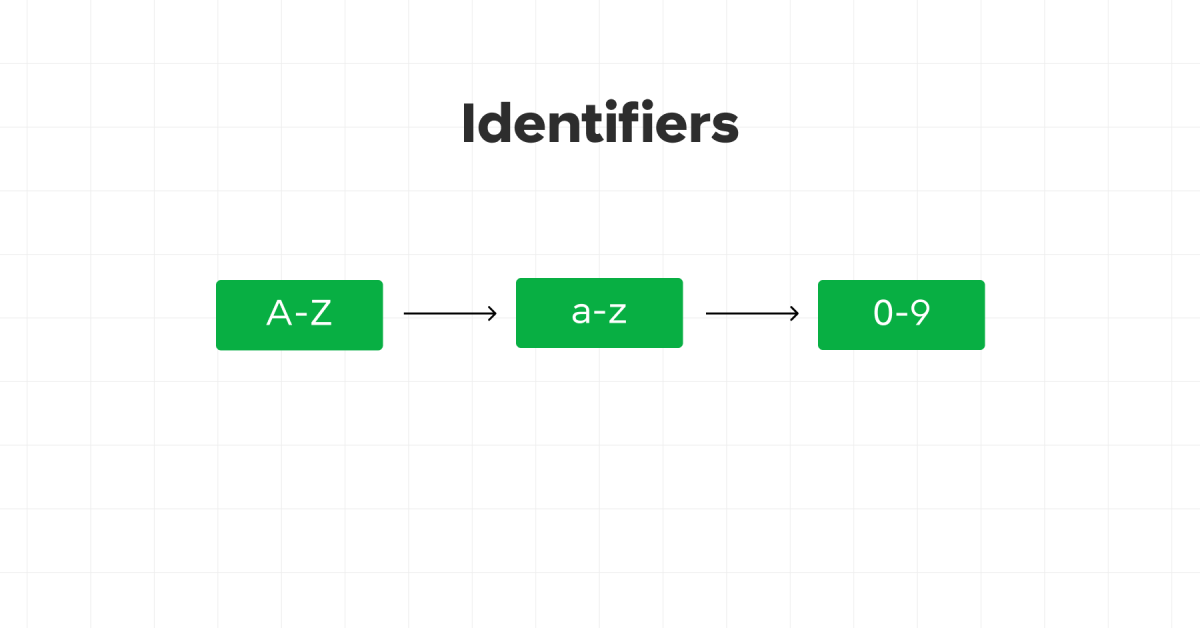
Rules for Identifiers:
- Must begin with a letter (A-Z or a-z) or an underscore (_).
- Can be followed by letters, digits (0-9), or underscores.
- Cannot be a Python keyword.
- Case-sensitive (
variableandVariableare different identifiers).
Examples:
my_variable = 10
_variable = 30
variable123 = 40
2. Keywords
Keywords are reserved words in Python that have special meanings. They define the structure and syntax of the Python language and cannot be used as identifiers.
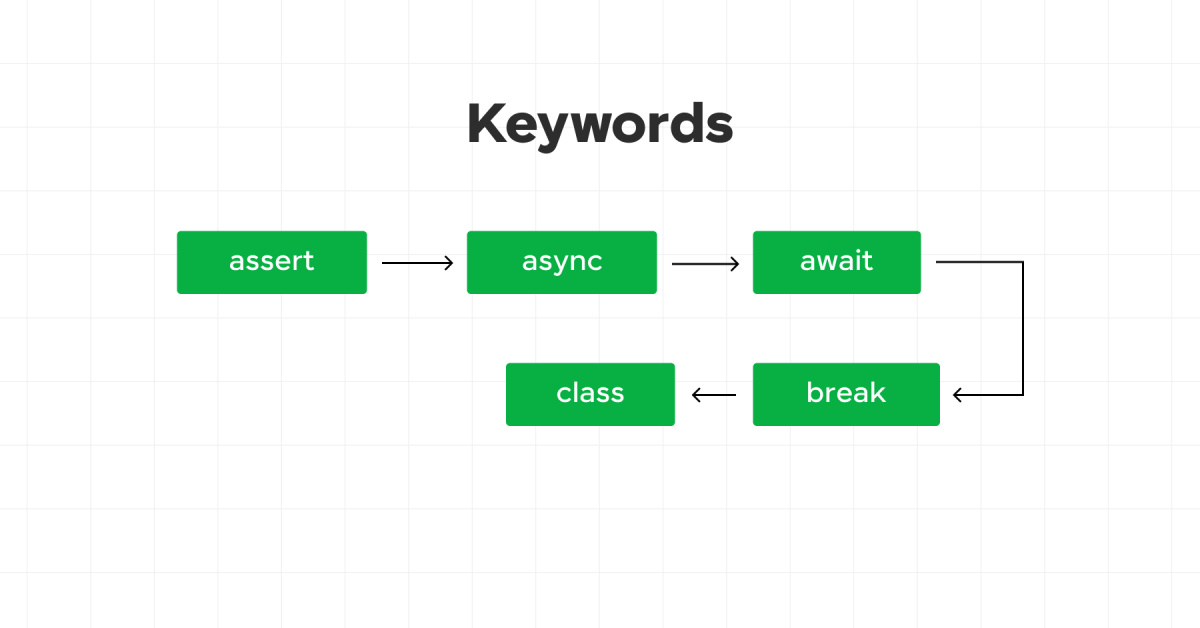
Common Keywords in Python:
Python has 35 keywords that are off-limits for naming your variables or functions. They’re case-sensitive and must be used exactly as they are. Here’s the list:
| Keywords |
|---|
| and |
| as |
| assert |
| async |
| await |
| break |
| class |
| continue |
| def |
| del |
| elif |
| else |
| except |
| False |
| finally |
| for |
| from |
| global |
| if |
| import |
| in |
| is |
| lambda |
| None |
| nonlocal |
| not |
| or |
| pass |
| raise |
| return |
| True |
| try |
| while |
| with |
| yield |
3. Literals
Literals are raw values or constants in Python. They represent fixed values that are directly assigned to variables.
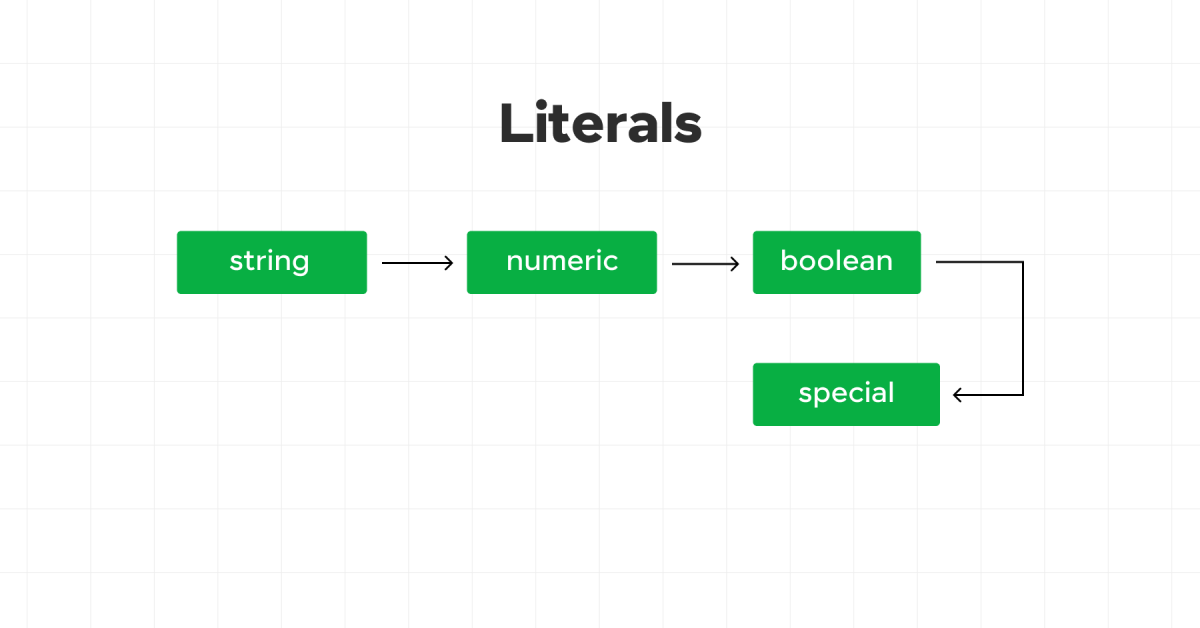
Types of Literals:
- String Literals: Enclosed in single, double, or triple quotes. (string_literal2 = “Hello, World!”)
- Numeric Literals: Include integers, floating-point numbers, and complex numbers. (integer_literal = 42)
- Boolean Literals:
TrueorFalse. (boolean_literal_true = True) - Special Literals:
None. (special_literal = None)
4. Operators
Operators are symbols that perform operations on variables and values. Python supports various types of operators.
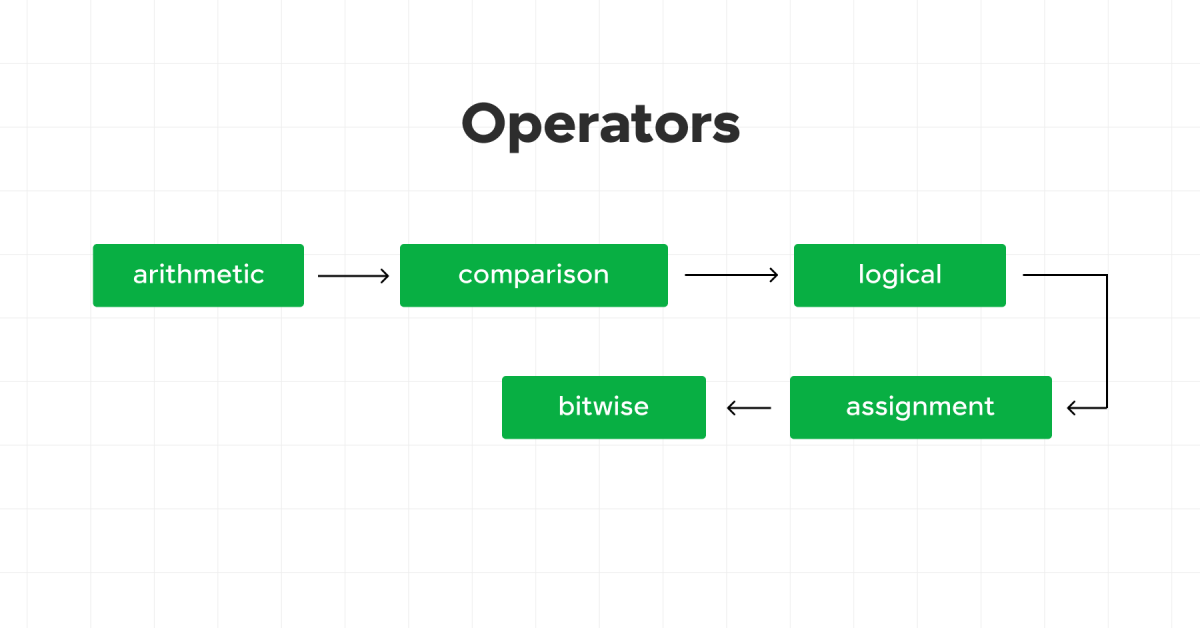
Types of Operators:
- Arithmetic Operators: Perform arithmetic operations. (print(a + b) # prints the sum of a and b)
- Comparison Operators: Compare values. (print(a == b))
- Logical Operators: Perform logical operations. (print(a > 5 and b < 30))
- Assignment Operators: Assign values to variables. (a += 5 print(a))
- Bitwise Operators: Perform bit-level operations. (print(a & b))
5. Punctuation
Punctuation in Python includes symbols that are used to organize code structure and syntax. This category includes delimiters and other special symbols.
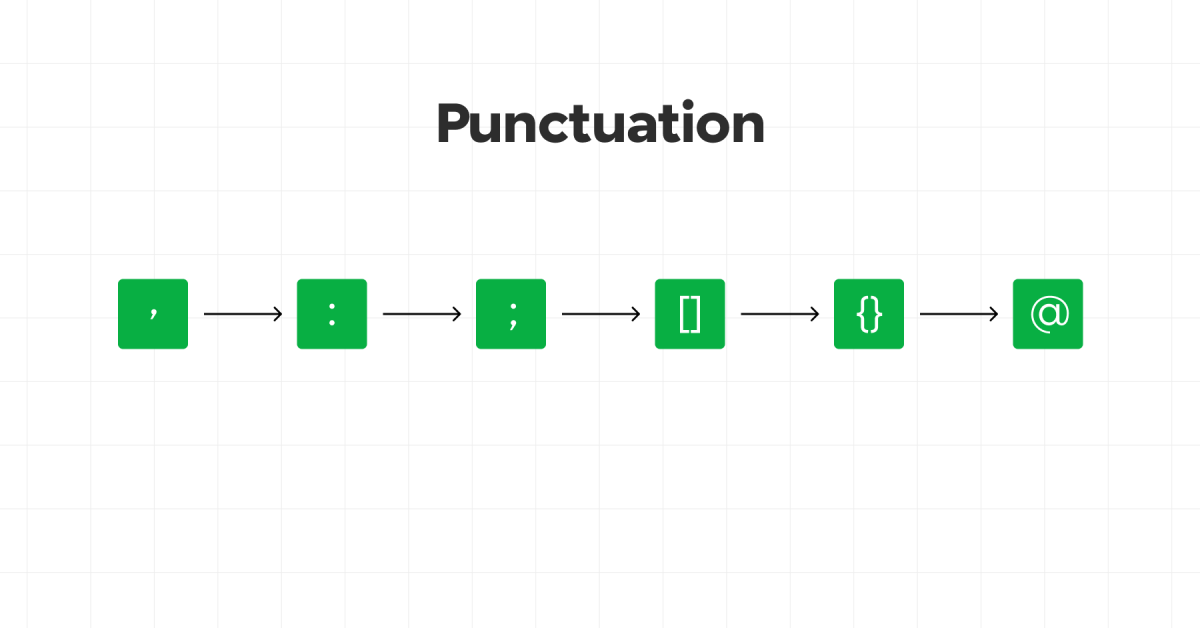
Examples:
- Parentheses
(): Used in function calls, and to group expressions. - Brackets
[]: Used for list, array indexing, and slicing. - Braces
{}: Used to define dictionaries and sets. - Colon
:: Used in function definitions, class definitions, and control structures. - Comma
,: Used to separate items in a list, function arguments, etc. - Dot
.: Used for attribute access. - Semicolon
;: Used to separate multiple statements on a single line (though rarely used in Python). - At
@: Used for decorators.
You must try some of the beginner-level Python projects to get started with your Python journey.
Understanding these fundamental concepts—identifiers, keywords, literals, operators, and punctuation—will help you write syntactically correct and readable Python code. Get these down, and you’re on your way to mastering the language.
Want to learn more about Python, must refer to the Python tutorial.
Kickstart your Programming journey by enrolling in GUVI’s Python Course where you will master technologies like multiple exceptions, classes, OOPS concepts, dictionaries, and many more, and build real-life projects.
Wrap Up
Understanding tokens is fundamental to mastering Python. Tokens are the building blocks that make up your code, and recognizing their different types helps you write and read Python programs more effectively. From keywords and identifiers to literals, operators, and delimiters, each token type plays a crucial role in defining the syntax and semantics of Python.
FAQs
What is a token in programming?
Token is the building block of a programming language, it is the smallest unit of a code.
What is the Tokenize function in Python?
The tokenize function in Python returns a Python generator of token objects. Each token object is a simple namedtuple with three fields: (kind, txt, val).
What are the lists of tokens in Python?
These are the lists of Python tokens:
1. Keywords.
2. Identifiers.
3. Literals.
4. Operators.
5. Punctuators.











![Mastering Recursion in Python: A Comprehensive Guide [2025] 8 7 1](https://www.guvi.in/blog/wp-content/uploads/2024/05/7-1.png)
![Becoming A Top Python Backend Developer: Must-Know Technologies [2025] 9 Must-Know Backend Technologies](https://www.guvi.in/blog/wp-content/uploads/2024/04/Must-Know-Backend-Technologies.png)
![Mastering Top Python Basics: Generator Expressions & Comprehensions [2025] 10 Feature Image - Python Generator Expressions & Comprehensions](https://www.guvi.in/blog/wp-content/uploads/2024/04/Feature-Image-Python-Generator-Expressions-Comprehensions.webp)




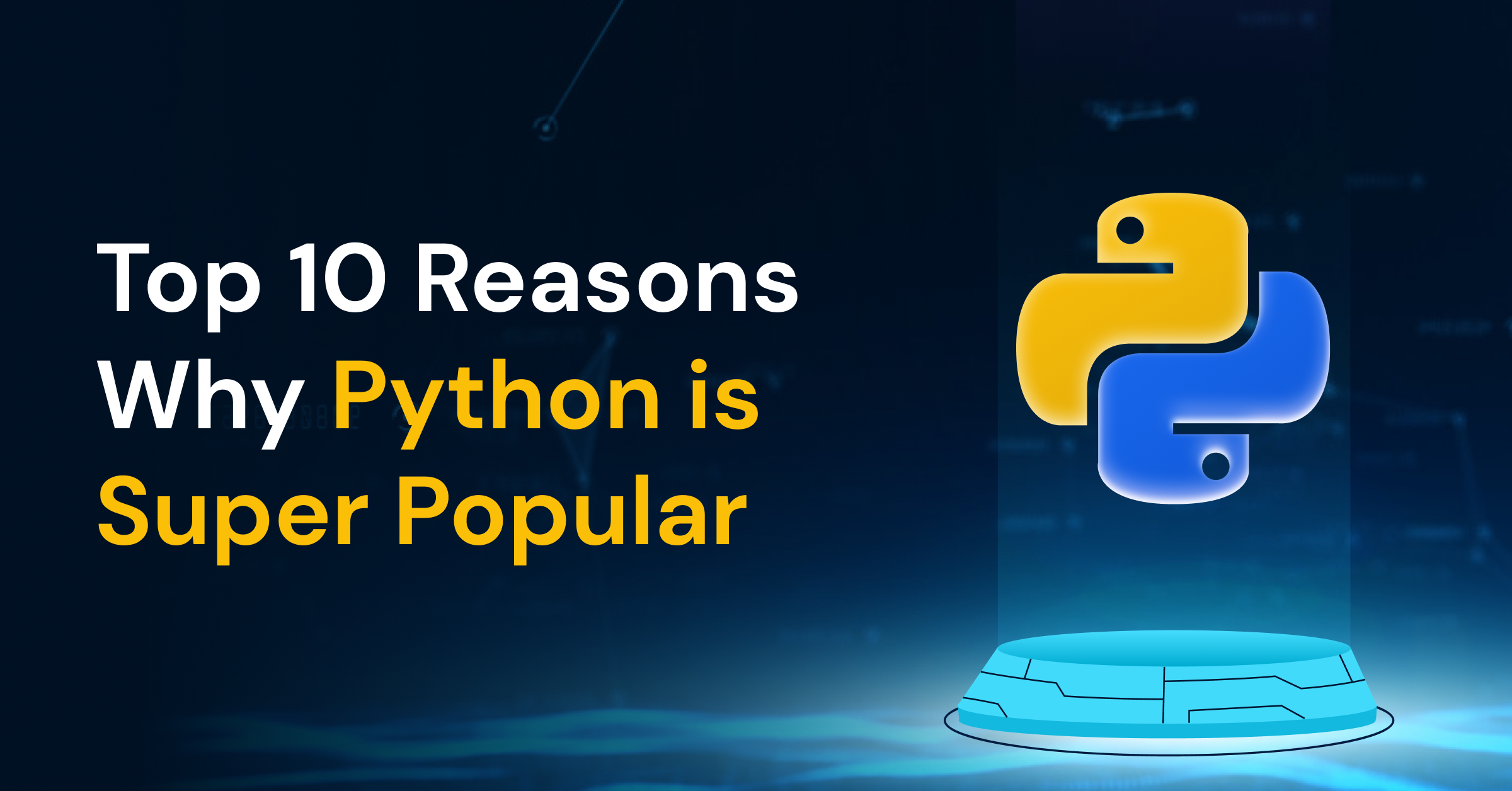

Did you enjoy this article?